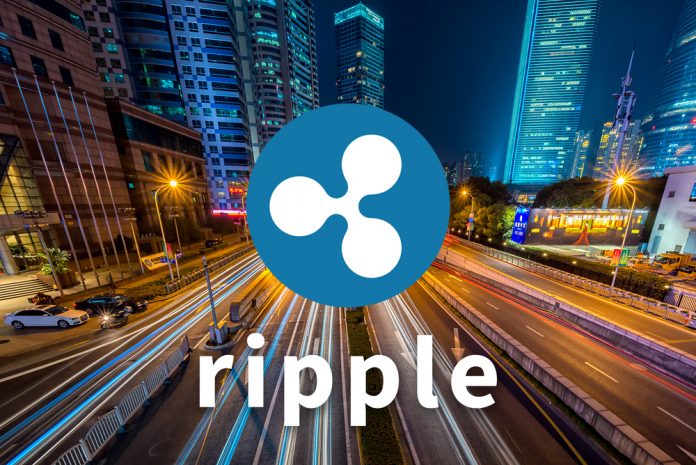APERCU
Date of creation: 2014
Website : https://ripple.com/
Protocol : RTXP (Ripple Transaction Protocole)
Cryptocurrency : Ripple (XRP)
Number of circulating tokens and price: https://coinmarketcap.com/currencies/ripple/
Total number of Tokens: 100 billions spread among Ripple’s founders (20%), Ripple Lab (25%) and the users of the network (55%). Note that in May 2017, Ripple’s management has announced that they would pledge 14 billions of their XRP for 10 years to answer the fear of investors that founders could fleed the market with their new coins anytime making the price fall.
Où acheter XLM : Poloniex, Bittrex, Kraken, Stellar Decentralised exchange.
PITCH
Ripple is a protocol which purpose is to facilitate financial transactions. As SMTP (Simple Mail Transfer Protocol) that designed the rules which need to be followed by computers in order to tranfer e-mails, RTXP (Ripple Transaction Protocole) defines a list of rules allowing users to make transactions on the internet instantly and for free, with any currencies, cryptocurrencies or any other means.
Ripple’s goal is to link all the existing payment networks which are currently independant and require heavy backoffice to connect them. Ripple’s network is actually around 75 banks all around the world.
INNOVATION
How does Ripple work:
RIPPLE CONNECT
Ripple Connect is the element of the protocol that manage the communication among the different parts. It is the first step of the transfer. In the below example, if Alpha Corp want to transfer funds to Beta Corp, it will start to send a reques to its bank which will use its aollocated Ripple Connect to obtain the necessary information to proceed to the transfer. Its Ripple Connect will indeed connect with the Ripple connect of the destination bank to obtain a quotation for the transfer, with a « market maker » or « liquidity provider » which will provide the exchange rate.
Alpha Corp will be in a position to determine if the conditions of the transfer are acceptable before proceeding to the transfer. If this is the case, Beta Corp will be able to proceed with the background checks required by national regulations. Once both banks are ready to transfer funds, the bank of Alpha Corp will organise the transfer with ILP Validator.
ILP VALIDATORS
ILP (« Inter-Ledger Protocol ») Validator role is to coordinate the ledger of the different banks, in order to update them at the same time instead of separately as it is currently the case.

The two banks will put the amount to be transferred (i.e the funds to be transfered from the bank of Corp Alpha to the bank of Corp Beta and the funds that the Bank of Corp Beta will transfer to Corp Beta) on a separate account, so that the ILP Validator will be able to make the transfer at the same time, avoiding any transfer risk or delay.
LE CONSENSUS
Once the transaction is validated, it is sent to certain members of the network for confirmation : the Tracking Nodes and the Validation Nodes. The role of the first is to transmit the transactions through the network and provide information on the state of the blockchain, while the second effectively participate to the consensus, i.e they validate the transactions, gather them in a block and cpollecgtively validate the blocks.
As you can see from the below graph, transactions can have three differents status : candiate, approved or rejected. A candidate transaction correctly constituted and approved, is added to the block of transactions currently being validated.
The completion of the consensus is then realised following the rules of the Byzantine Fault Tolerance that we describe in this article. Basically, each Validating Nodes calculates its own version of the new block and transmit the hash to the network so the other members can verify it quicky. The new block will then be added to the blockchain if a super-majority of the Validating Nodes have received the same hash.

The use of XRP : the purpose of XRP cryptocurrency is both to ensure the security of the network and serve as a bridge between other currencies. Before you create a transaction on the network, you will need to have a minimum reserve of XRP on your account (50 XRP). For each transactions, 0.00001 XRP is destroyed which is equivalent to say the using ripple is free. This fee is still used to discourage attacks that would create an important amount of fake accounts (« Ledger spams ») or transactions (« Transaction Spams ») in order to saturate the network. With XRP such attack would be too expensive.
XRP is also used as an intermediary between two currencies if the parties cannot find a member of the network (“Gateway”) able to act as a Market-maker. For instance, if Alice wants to use Euros and Bob dollars but no one on the network is available or willing to make the converstion in a sens or the other, it is stil possible to convert both Euros and Dollars into XRP to complete the transaction and then convert back into their currency.
It is important to note that Ripple network can still be used without using XRP and exchanges can be done in every currencies.
BUSINESS MODEL
Ripple generates revenues in two different ways. First through the XRP tokens that retains and that it sells to banks and user in order to convert currencies on the network. Second by selling and mainting the Inter-Leder Protocol to the members of the network.
THE TEAM
The fast growing team is spread on five different sites: San Francisco, New York, London, Luxembourg and Sydney
To know more https://ripple.com/company/
COMPETITORS
Ripple’s goal is to replace the technologie that is currently used by company like SWIFT. At the moment, we cannot see any company developping a technology and a network as advanced as the one created by Ripple.
Some exchanges like Coinbase and BitPay have created a solution to manage payments in bitcoins between business and consumers, but the technology they are developping is based on the Bitcoin protocol and is not as advanced than the Inter-Ledger Protocol developped by Ripple. The Bitcoin Protocol is particularly difficult to scale despite several promising projects like the Lightning Network.
We do not beleive either that Stella is a competitor to Ripple even if they are based on very similar technology. The reason is that their strategy is very different. Ripple’s goal is to connect banks and facilitate financial transfers where Stellar is a non for profit organisation which proposed the use of its technology for free.
POUR ALLET PLUS LOIN :
Rippple Consensus Whitepaper – https://ripple.com/files/ripple_consensus_whitepaper.pdf
Pour plus d’information sur le fonctionnement du consensus de Ripple, vous pouvez vous reporter sur cette page: https://ripple.com/build/ripple-ledger-consensus-process/





[…] https://perc360.com/ripple-xrp-massive-conference-october-disrupt-international-banking/ https://www.blockchains-expert.com/en/ripple-the-protocol-that-connects-banks/ Tags: news, […]